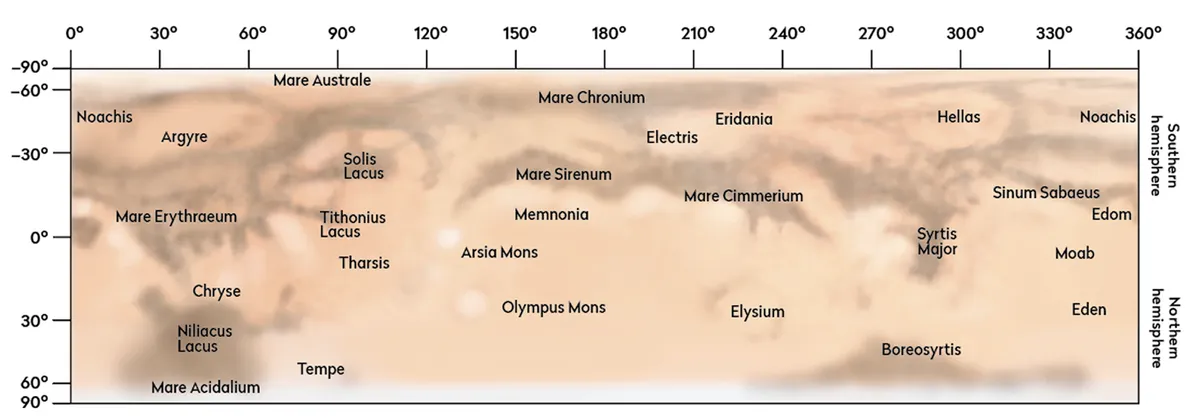Olympus Mons on the planet Mars is the largest volcano in the Solar System
Located close to the Martian equator, in the planet’s western hemisphere, Olympus Mons stands an impressive 21km above the Mars global datum (the equivalent of ‘sea level’ for a waterless planet), and in places towers over its local surroundings by as much as 26km.
By way of comparison, here on Earth, Mount Everest stands approximately 8.8km above sea level, while the world’s tallest volcano, Chile’s Nevados Ojos del Salado, stands just 6.8km high.

Not just tall, but large
And Olympus Mons isn’t just tall – it’s broad, too.
In fact, it has a surface area of some 300,000 km2 (120,000 sq mi) – that’s roughly the size of Poland or Italy!
That’s because, like the volcanoes that make up the islands of Hawaii, Olympus Mons is a shield volcano.

This means it has broader, flatter profile – like a warrior’s shield lying on the ground – than the cinder cone, lava cone or lava dome types that probably spring more immediately to mind when you hear the word ‘volcano’.
Shield volcanos form when a fissure in the planetary surface oozes very fluid, low-viscosity lava, which tends to spread out further and more quickly than the more viscous lava associated with other types of volcano.

Why so big?
Olympus Mons lies at the heart of a region of volcanic activity called Tharsis Rise.
This activity is caused not by the movement of tectonic plates – Mars is too small to have those – but rather by the presence, just below the surface, of a huge magma hotspot.
It is this that has enabled the volcano to reach its enormous size.

Since its vulcanism isn’t subject to fluctuations over time (as a result of plate tectonics), layers of lava have been able to build up in one place over millions of years – although for the past 25 million years or so, this Martian volcano has lain dormant.
The Martian volcano is visible from Earth through a telescope as an albedo feature – an area of brightness – that was traditionally labelled Nix Olympica (Latin for 'Olympic Snow').
Astronomers had long suspected this to be a mountainous region, but it wasn’t until NASA’s Mariner 9 spacecraft confirmed that topography in 1971, that Olympus Mons was given its current name.
In Latin, the name means 'Mount Olympus'.
And in 2024, a study found that Mars's equatorial volcanos contain 60 Olympic swimming pools' worth of frost.

Olympus Mons eruptions
Olympus Mons is not erupting now, and hasn't erupted throughout the Space Age, i.e. in the time that humans have been sending rovers and probes to investigate Mars.
That means there are no images of Olympus Mons erupting.
In fact, astronomers estimate Olympus Mons' most recent, large volcanic eruption happened 25 million years ago, which is actually quite recent in terms of Mars's geological history.
However, there is likely much older volcanic activity at Olympus Mons that may have been buried over time by younger lava flows.
But will Olympus Mons ever erupt in future?
Scientists say it could still be volcanically active and is relatively young, geologically speaking, meaning it may erupt in future.

